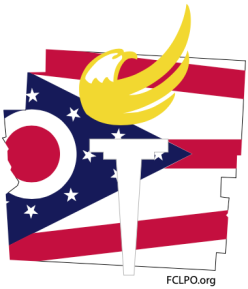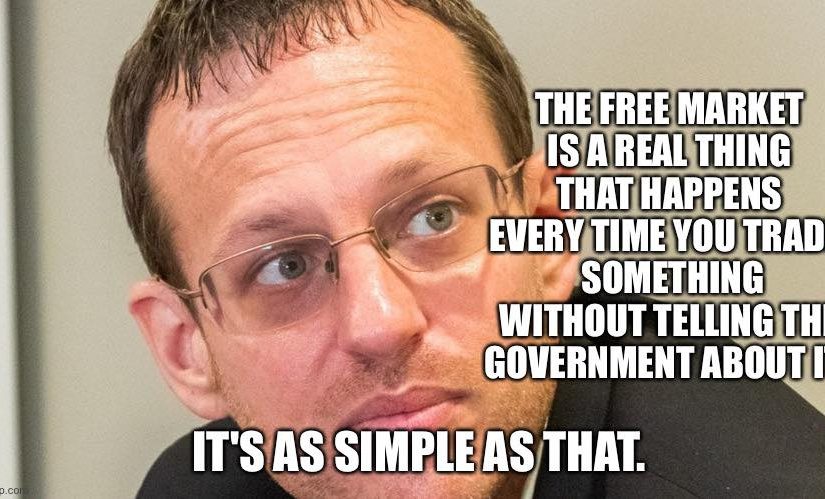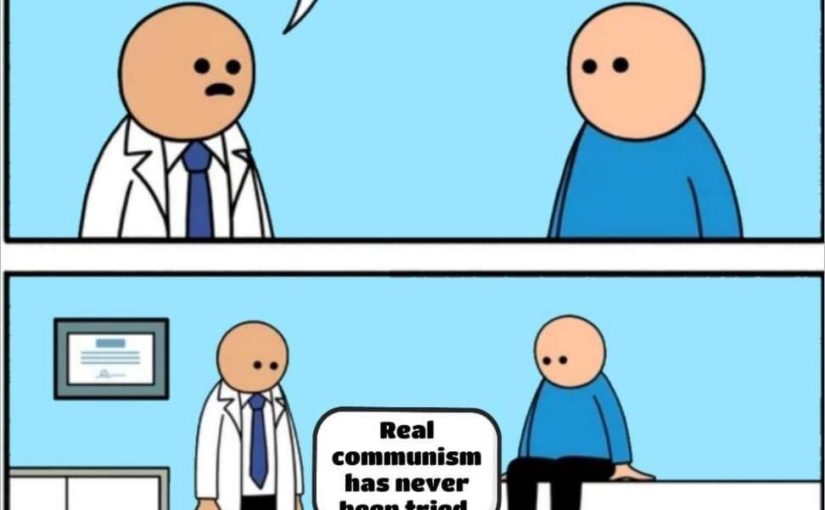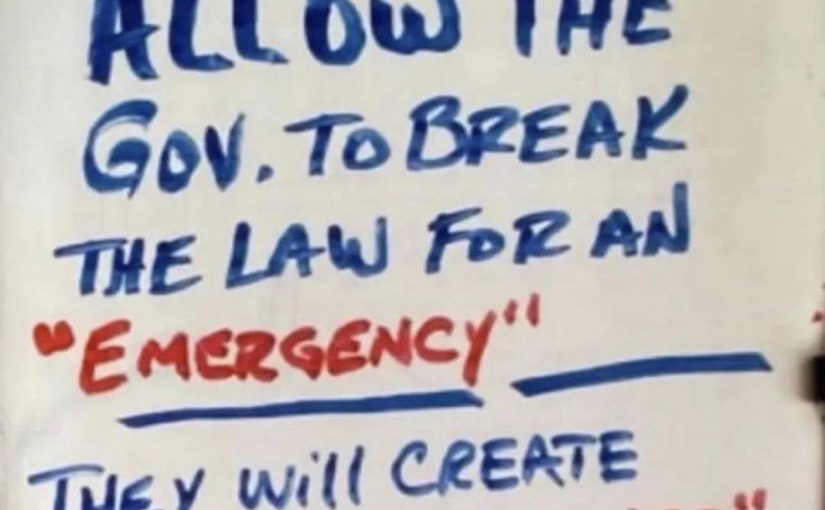Author: Michael Sweeney
The free market is a real thing that happens every time you trade something without telling the govt about it. It’s as simple as that. – Spike Cohen
#ThinkLibertarian
Amendment Proposal: Elimination of Townships and Reallocation of Their Powers and Responsibilities
Section 1: Purpose
The purpose of this amendment is to streamline local governance in the State of Ohio by eliminating the township form of government and redistributing its powers, responsibilities, and resources to counties and municipalities. This change aims to reduce redundancy, enhance governmental efficiency, and improve service delivery to Ohio residents.
Section 2: Elimination of Townships
(A) Effective [insert date], the township form of government is hereby abolished in the State of Ohio.
(B) All legal, administrative, and fiscal functions currently exercised by township governments shall be reassigned to counties and municipalities in accordance with this amendment.
Section 3: Redistribution of Powers and Responsibilities
(A) County governments shall assume responsibility for:
(1) Road maintenance and infrastructure formerly under township control.
(2) Zoning and land-use planning not currently managed by municipalities.
(3) Cemetery operations and maintenance.
(4) Any additional services or responsibilities as determined by the General Assembly.
(B) Municipalities shall assume jurisdiction over local services within their existing boundaries, including:
(1) Law enforcement and fire protection where previously provided by townships.
(2) Local parks and recreation services.
(C) The General Assembly shall establish a transitional commission to oversee the reassignment of responsibilities, ensuring continuity of services for all Ohio residents.
Section 4: Transfer of Assets and Liabilities
(A) All township assets, including but not limited to real property, equipment, financial accounts, and records, shall be transferred to the respective county or municipality based on the location of the asset or the nature of its use.
(B) All township liabilities, including but not limited to outstanding debts and contractual obligations, shall be assumed by counties or municipalities in proportion to their jurisdictional authority or benefit.
(C) The General Assembly shall enact laws to facilitate the equitable redistribution of township resources.
Section 5: Transitional Governance
(A) A temporary commission, known as the Ohio Township Transition Commission, shall be established within 90 days of this amendment’s ratification.
(1) The Commission shall include representatives from counties, municipalities, and state government.
(2) The Commission shall develop and publish a comprehensive transition plan within one year of its formation.
(B) Township officials holding office on the effective date of this amendment shall serve as advisors to the Transition Commission until their terms expire.
Section 6: Amendments to Existing Laws
(A) The General Assembly shall amend or repeal all state laws that conflict with the elimination of townships as required by this amendment.
(B) Counties and municipalities shall have two years from the effective date of this amendment to adopt ordinances or resolutions necessary to fulfill their new responsibilities.
Section 7: Severability Clause
If any provision of this amendment is held invalid, the remaining provisions shall remain in full force and effect.
Submission to the Electorate
This amendment shall be submitted to the electors of the State of Ohio at the next general election occurring at least 90 days after its ratification by the General Assembly.
This is a draft proposal for discussion purposes only and not endorsed by FCLPO.
Eliminating townships in Ohio to reduce govt
Townships in Ohio should be eliminated because they create unnecessary layers of government and waste taxpayer money. There are 1,308 townships in Ohio, each with its own set of officials, services, and budgets. This results in a fragmented and inefficient system that causes confusion, duplication, and excessive spending. Consolidating townships into counties or cities would simplify governance, cut costs, and improve the delivery of services to citizens.
One of the main problems with townships is the duplication of services. Often, the same services are provided by both the township and the county, such as road maintenance, emergency services, or zoning. This overlap creates inefficiencies and forces taxpayers to pay for services they may not need or use. By eliminating townships, services could be streamlined, and governments could focus resources on what is actually necessary, avoiding wasteful spending.
Another issue is the lack of accountability in township governments. Township boards, often made up of just a few elected officials, do not have the same level of oversight or transparency as larger city or county governments. This lack of checks and balances makes it easier for corruption or mismanagement to go unnoticed. By consolidating townships, oversight would improve, and taxpayers would have more control over how their money is spent.
In addition, many townships struggle with financial problems. With smaller populations and limited budgets, some townships cannot provide the level of service that citizens expect. This leads to higher property taxes to cover shortfalls, which hurts residents and businesses. Eliminating townships would allow for more efficient use of resources, as larger counties or cities can pool their resources and provide services at a lower cost.
Another point is that townships often make it harder for residents to have a direct impact on local government. Township meetings tend to be less accessible, with fewer public hearings or opportunities for input. This makes it harder for residents to voice their concerns or engage with the government. By consolidating townships into larger counties or cities, local governments would be more transparent and responsive to the needs of residents.
Finally, the existence of townships can create confusion for residents, especially those living near township borders. Different sets of laws, taxes, and services apply depending on where a person lives. This lack of uniformity creates confusion and makes it harder for people to understand their rights and responsibilities. A county- or city-based system would offer greater consistency and clarity, making life simpler for residents.
Eliminating townships would also encourage more economic growth. A unified government structure would make it easier for businesses to navigate local regulations and access services. This could attract more investment, as businesses would have to deal with fewer bureaucratic hurdles. In the long run, a more efficient government structure would help promote economic development and job creation.
In conclusion, eliminating townships in Ohio would create a more efficient, transparent, and accountable government. It would reduce wasteful spending, improve service delivery, and simplify the lives of residents. By consolidating townships into counties or cities, Ohio would benefit from a more streamlined and effective system of governance that better serves the people.
That’s a nasty bug.
Surrounded by Libertarians
Book Review
Libertarian review that highlights books on individual freedom, limited government, free markets, and personal responsibility. It critiques works from diverse genres, promoting independent thought and offering insights into libertarian ideas and their real-world impact.
How Libertarian Activists Can Use Surrounded by Idiots
Thomas Erikson’s book, Surrounded by Idiots, is about understanding personality types and learning how to communicate effectively with others. By dividing people into four color-based personality groups—Red, Yellow, Green, and Blue—Erikson shows how to adapt your communication style to better connect with others. For libertarian activists, this framework can be a powerful tool to engage with the community and spread the Libertarian Platform in a way that resonates with different audiences.
Understanding Your Audience
Libertarian values, like individual freedom, personal responsibility, and voluntary cooperation, appeal to people in different ways. Erikson’s personality types help activists recognize how people’s personalities shape their perspectives:
- Reds value action and results. They are bold and decisive but may not want to spend much time debating ideas. When talking to Reds, libertarians can emphasize how their policies cut through government red tape and allow people to make quick, impactful decisions without interference. For example, Reds might respond well to arguments about how deregulation allows businesses to thrive.
- Yellows are optimistic and social. They love big ideas and excitement but can lose interest in dry details. To connect with Yellows, activists can focus on inspiring visions of a freer, more creative society. Stories of individuals who’ve succeeded through innovation and personal freedom will resonate with them.
- Greens are loyal and peace-loving. They dislike conflict and prefer steady, reliable solutions. Greens might be drawn to libertarian policies that promote community-driven solutions over government mandates. Showing how individuals can collaborate voluntarily to solve problems could win their support.
- Blues are analytical and focused on rules. They value facts and precision, so they need clear, logical explanations. When engaging with Blues, libertarians should emphasize the evidence behind their policies, like data on how free-market systems reduce poverty and improve living standards.
Building Connections
Libertarian activism often faces the challenge of overcoming misunderstandings about what the movement stands for. Erikson’s framework can help activists build trust by meeting people where they are. Instead of expecting everyone to think the same way, activists can tailor their approach to fit each personality type.
For example, a Red personality might be put off by lengthy philosophical discussions, but a quick, decisive pitch about cutting taxes could catch their attention. Meanwhile, a Yellow personality might prefer an energetic rally or social event that highlights the fun, creative side of libertarianism. Greens may appreciate one-on-one conversations that feel personal and supportive, while Blues will likely want detailed white papers or statistics to review.
By understanding these differences, activists can avoid one-size-fits-all messaging that doesn’t resonate with their audience. This personalized approach reflects the libertarian principle of respecting individual uniqueness and freedom of thought.
Spreading the Platform
Surrounded by Idiots also encourages self-awareness. Activists can use the book’s lessons to identify their own strengths and weaknesses. Are you a Yellow who loves energizing crowds but struggles to stay organized? Or maybe you’re a Blue who excels at research but needs to practice connecting emotionally with others. Recognizing your own personality type helps you play to your strengths while improving weaker areas.
In a libertarian society, solutions are decentralized, and people work together voluntarily. Erikson’s ideas align with this philosophy by promoting collaboration and mutual understanding. By learning to adapt their communication styles, libertarian activists can create stronger, more diverse coalitions and spread their platform effectively.
A Tool for Liberty
Ultimately, Surrounded by Idiots is a guide to building bridges. It teaches activists how to respect others’ individuality and connect on a human level. These skills are essential for spreading libertarian values, which are all about empowering people to live freely and responsibly.
By using Erikson’s insights, libertarian activists can better understand their communities, build trust, and inspire people to join the movement for liberty. When you communicate with empathy and adaptability, you don’t just spread ideas—you show people what freedom looks like in action.
Why Johnny Still Can’t Read: A Libertarian Take
Book Review
Libertarian review that highlights books on individual freedom, limited government, free markets, and personal responsibility. It critiques works from diverse genres, promoting independent thought and offering insights into libertarian ideas and their real-world impact.
Rudolf Flesch’s book Why Johnny Still Can’t Read (1981) exposes the failures of America’s education system in teaching kids to read. It builds on his earlier work, Why Johnny Can’t Read (1955), and argues that schools continue to use ineffective teaching methods, leaving millions of children unable to read properly. Flesch places the blame on government control, bureaucratic stubbornness, and special interests, calling for parents to take back control of their children’s education.
The Problem with Reading Education
Flesch focuses on the “look-say” or whole-word method, which teaches kids to memorize entire words by sight rather than understanding how letters and sounds work together. This method treats reading like recognizing pictures instead of a logical skill. Flesch argues this approach ignores how the English language works and sets kids up for failure.
Instead, he champions phonics, which teaches kids to connect letters with sounds and sound out words step by step. Phonics gives kids the tools to read new words independently. Without it, children end up frustrated and unable to read anything beyond the words they’ve memorized. Flesch calls this failure not just a mistake, but a betrayal of children’s potential.
Why Schools Stick to Bad Methods
The real villain in this story is government overreach. Public schools operate like monopolies, with little accountability to parents or competition to drive improvement. Bureaucrats and textbook companies profit from sticking to the whole-word method, even when it fails students. Teachers, tied to union rules and outdated practices, often have no say in how reading is taught.
Flesch points out that government control of education stifles innovation. Instead of experimenting with better methods like phonics, schools double down on bad policies because admitting failure would hurt their reputation. Worse, parents are forced to accept whatever the system decides because they have no real alternatives if they can’t afford private schools or tutoring.
The Consequences of Poor Reading Instruction
The failure to teach reading properly has devastating effects. Kids who struggle to read fall behind in every subject, limiting their future opportunities. Many develop a hatred of reading and lose confidence in their ability to learn. This failure is entirely preventable, but the system’s refusal to change makes kids—and society—pay the price.
Flesch argues that literacy is a fundamental skill for freedom. People who can’t read well are easier to control and manipulate, which benefits those in power. A population that struggles with reading is less likely to question authority or seek out new ideas.
A Call for Parental Action
Flesch doesn’t just blame the system; he empowers parents to take action. He encourages them to teach their kids phonics at home if schools won’t. He provides simple steps for parents to follow, proving that teaching reading isn’t complicated when you use the right method.
Libertarians can see this as a perfect example of how individuals, not government, solve problems. Parents who take charge of their children’s education can bypass the broken system and give their kids the tools they need to succeed. Flesch’s message is clear: don’t wait for schools to fix themselves—act now.
The Libertarian Solution
Flesch’s critique aligns with libertarian ideas about education reform. He shows how central planning and government monopolies lead to failure, while individual action and choice lead to success. A system that gives parents more control—through school choice, vouchers, or homeschooling—would let families escape failing schools and encourage competition to improve education for everyone.
Why Johnny Still Can’t Read remains a powerful reminder that freedom works better than bureaucracy. By taking education out of the government’s hands and putting it back into the hands of families, we can ensure that every child learns to read—and learns to love it.
If you allow govt to break the law for an “emergency” they will create “emergencies” to break the law.
Imagine a World Without Taxes: Freedom and Prosperity for Ohioans
What if Ohioans could keep all the money they earned? Without taxes, life could be simpler, cheaper, and more free. Every paycheck would belong entirely to you, with no deductions for government programs or services. Let’s explore how Ohioans could thrive without the burden of taxation.
Keeping Your Money
When the government takes a part of your income, it decides how to spend it. This might sound necessary, but in a world without taxes, you would choose how to use your hard-earned money. Want better schools for your kids? You could pay for the education that fits their needs. Want safer roads? Companies would compete to build and maintain roads more efficiently than the government. No taxes mean no middleman. You’d pay directly for the services you value most, saving money in the process.
Lower Costs Everywhere
Taxes drive up the cost of nearly everything. Roads, schools, and health care aren’t free—taxes fund them, often inefficiently. Private companies, driven by competition, would provide these services at lower costs and with better quality. When businesses compete for your dollar, they innovate and improve. Imagine affordable health care tailored to your needs or schools using the latest technology to teach your children. Without taxes inflating costs, you’d get more value for your money.
Freedom to Choose
Without taxes, you would decide where your money goes. If you’re passionate about helping others, you could donate to charities that address the issues you care about. If you love nature, you could support parks and conservation efforts. The power would shift from the government to the individual. Every dollar would reflect your values, not the decisions of distant politicians.
Innovation and Progress
Over the past century, innovation has made life easier and more efficient. From cars to smartphones, competition has driven progress. But government programs, funded by taxes, often fail to keep up. Private companies, freed from heavy taxes and regulations, could deliver faster internet, cleaner energy, and groundbreaking medical treatments. Without taxes stifling growth, Ohioans would see even more amazing advancements.
Helping the Needy
Some worry that without taxes, people in need would be left behind. But history shows that communities are generous when they’re free to give. Churches, nonprofits, and local organizations could step up to help those in need. Instead of relying on inefficient government programs, people would help each other directly, building stronger, more caring communities.
The True Cost of Government
Taxes don’t just take your money—they take your freedom. Every dollar sent to the government is a dollar you can’t spend on your family or future. Government programs often waste money on bureaucracy and fail to deliver results. By keeping your money, you’d be free to make better choices for yourself and your community.
A Better Future for Ohio
Imagine a future where Ohioans live free from the burden of taxation. Families would have more money, businesses would thrive, and innovation would flourish. Roads, schools, and hospitals wouldn’t disappear—they’d improve, driven by competition and choice. Without taxes, we’d be free to pursue our dreams, help our neighbors, and create a better life for everyone.
This vision of freedom and prosperity isn’t a dream—it’s a possibility. By trusting individuals, not the government, Ohio could unlock its full potential. A tax-free future means more freedom, lower costs, and a brighter tomorrow. Wouldn’t you want to live in a world like that?








